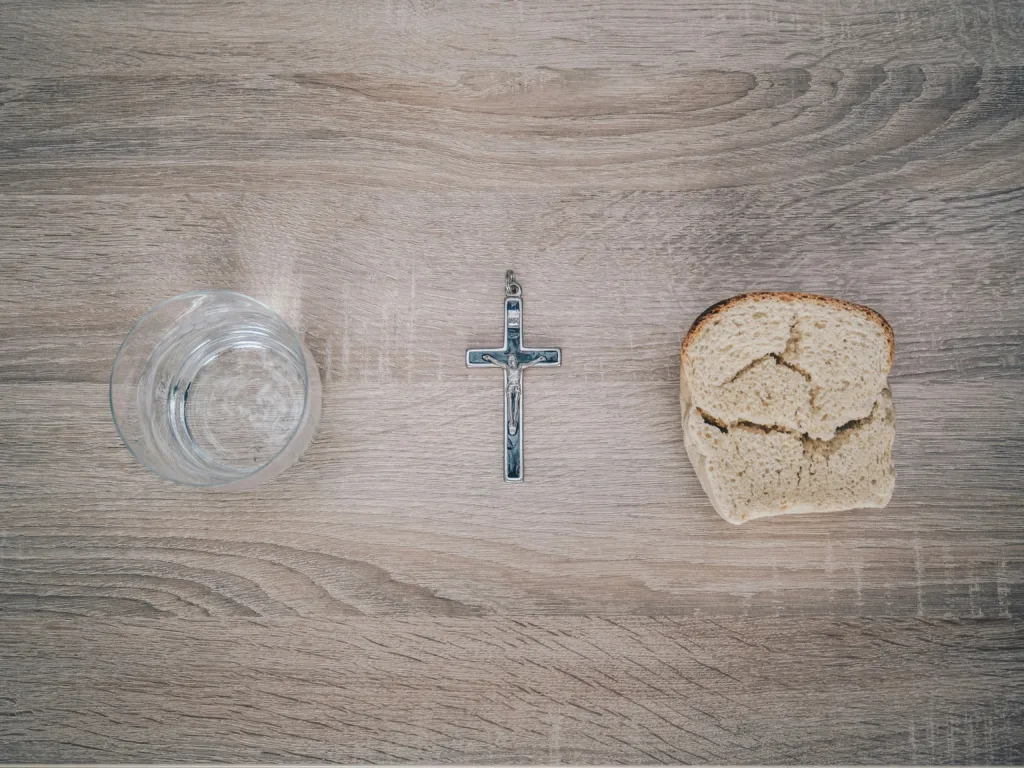
by Therese Horvat
Special to The Leaven
KANSAS CITY, Kan. — There’s no doubt about it: Lent is the church’s primary penitential season. Viewed from a related perspective — and true to its name — Lent is meant to be a time of spiritual renewal.
The word “Lent” traces its roots to the Middle English term for “spring” or “springtime.” Applying this understanding to Lent, the church invites us to do soul-searching and spiritual housecleaning as we journey with Christ from the desert of temptations through his ministry of service to his crucifixion and ultimately to the springtime of his resurrection.
From this dual emphasis on penance and renewal, Lent has great liturgical and personal significance as a time to take stock of our lives and to deepen our relationship with Jesus.
In fact, we can take our cues from Jesus for ways to accomplish this. When life was pressing in on him, he went away to pray and fast. He emerged from these times of spiritual respite with renewed resolve and energy to serve God and others.
Jesus’ time in the desert
The first reported occasion of Jesus seeking solitude and one that is foundational to the Lenten season occurs early in the Gospels. Immediately following his baptism and before beginning his public ministry, Jesus goes to the desert to pray and fast.
Like Moses, Elijah and other figures in sacred Scripture, Jesus takes time out to prepare for his God-given mission. His 40 days in the desert are not without challenges: The devil tempts him three times. From this experience of being tried, Jesus affirms his steadfast commitment to accept and to do God’s will.
According to the Gospel of Luke, he returns to Galilee in the power of the Spirit to begin his life of serving, teaching and healing.
These 40 days in the desert became a model for Christians in the early church — and us still — to emulate Jesus’ practices of praying, fasting and extending charity to others.
Today, we know these as the “three pillars of Lent” — the practical ways that we can do penance and experience renewal as we journey with Jesus to the cross.
A wake-up call to praying
Later in Luke’s Gospel, shortly before his betrayal and arrest, Jesus prays fervently and with anguish in the Garden of Gethsemane. After this soul-wrenching experience, Jesus finds his apostles fast asleep. He awakens them and urges them to pray.
Jesus’ wake-up call to them — and to us — is a plea for praying as he did in deep conversation and communion with his “Abba,” Father. Lent casts special light on this request with 40 days dedicated to prayerful preparation for Easter.

There are multiple tried and proven spiritual disciplines to enrich our Lenten journey. These include the Stations of the Cross, daily devotionals, the rosary, the Liturgy of the Hours, litanies, Scripture, a daily examination of conscience, meditation and silent prayer. Heightened opportunities to speak and listen to God can occur while participating in the sacrament of reconciliation and eucharistic adoration and attending daily Mass, if possible. Strengthening our prayer regimens opens up channels for our communication with God.
Prayer and fasting are compatible companions during Lent. Each practice supports the other. We recognize our dependence on God — Father, Son and Spirit. In the process, we seek to deepen our relationship with the Lord. We fast from the stuff that fills our days: food, obsessions, excesses, resentments, things.
Fasting for the right reasons
In the first three centuries of Christianity, it’s likely that seasons of fasting and prayer were observed, particularly in preparation for Easter. The duration of fasting and abstinence from certain foods varied from three days to three weeks.
With the legalization of Christianity in the year 313 and the First Council of Nicaea in 325, Lent as a period of 40 days of fasting and prayer in preparation for Easter became more formalized. Candidates for baptism at Easter observed fasts as did those desiring restoration after committing serious sins.

Penitents often wore sackcloth garments and sprinkled themselves with ashes as public signs of their penance. The latter morphed into what we know today as Ash Wednesday. Lent served to remind the faithful of the need for penitence and of their own mortality. Over time, Lenten practices were modified, adopted and applied to all of the faithful.
Across the centuries, the strictness of the church’s fasting rules has waxed and waned. Today, Catholics 14 and older are asked to abstain from meat on Ash Wednesday, the Fridays of Lent and Good Friday. Additionally, those 18 to 59 have the obligation of fasting on Ash Wednesday and Good Friday — consuming one main meal, two smaller meals and no food in between. These rules apply unless physical health or other valid reasons present barriers to fasting.
People have also become accustomed to “fasting” from other pleasures or activities as a sign of Lenten sacrifice. They might choose to lessen time on social media, give up consumption of sweets or alcohol, or refrain from being critical or negative.
What’s key is the intention behind the fasting. Lent is not a time directed to losing weight or to winning personality contests. Rather, its purpose is to weigh in more with Jesus, to deepen our faith and to live it more fully. It’s about turning away from our sinful ways and turning toward God.
What’s also important is how we fill the voids resulting from letting go of familiar habits and preoccupations. If we Instagram less, can we pray a little more? Can we fill the space created by self-denial with generosity and simple living, self-discipline and prayer? If we become kinder and gentler, can we broaden the experience to encompass greater acts of charity?
Doing unto others
If we use Lent to pray and fast as Jesus taught us, the next logical progression following in his footsteps is charitable outreach to others, especially those most in need. Jesus didn’t stay in the desert or linger in the garden. He quickly moved from places of silence to the nitty-gritty of life.
People with a variety of needs sought him out, or he found them. They had physical impairments, were possessed by demons, were scourges of society, outcasts and sinners. Jesus remarkably and charitably touched and changed their lives.

The concept of almsgiving as a pillar of the Lenten season urges us to do as Jesus did through acts of charity. This can be financial support of worthy causes — special weekend collections, Operation Rice Bowl, other charitable organizations serving persons in need. Almsgiving also involves the practice of donating food or other material goods to persons living in poverty. It further encompasses performing acts of charity.
The idea is that during Lent we are called to “donate” the value of what we have given up or fasted from to charity. From our self-denial, someone else benefits.
Beyond this, Jesus calls us to a lifetime of charity and service. Lent presents the ideal time to consider ways to get more involved in helping those who are poor in mind, body and spirit.
Giving Pope Francis the final word
In his Lenten message this year, Pope Francis asks if we hear the cries of inequality and conflict in our world today. He invites us to pause in prayer to consider ways we can mitigate suffering, the various forms of social and economic oppressions and the deficit of hope in our world.
Referencing the three pillars of Lent, the Holy Father concludes: “Prayer, almsgiving and fasting are not three unrelated acts, but a single movement of openness and self-emptying, in which we cast out the idols that weigh us down, the attachments that imprison us. Then, the atrophied and isolated heart will revive. Slow down, then, and pause! The contemplative dimension of life that Lent helps us to rediscover will release new energies.”
Fast facts about Lent
• Lent begins with the observance of Ash Wednesday (Feb. 14 this year) and ends at sundown on Holy Thursday (March 28). Fasting and penance continue through the end of Holy Week.
• Lent covers 44 days. However, the Sundays of Lent are not required times of fasting — hence, the 40 days of Lent.
• In the spirit of the season, worship during Lent is intended to be simpler and more austere with violet vestments, absence of the recitation of the Gloria and Alleluia, and the covering of statues and crucifixes with purple cloth.
• The Fourth Sunday of Lent — Laetare Sunday — is an exception. Marking the halfway point through Lent, the liturgy focuses with joy in anticipation of Easter. Celebrants can wear rose-colored vestments, and decorative floral arrangements are allowed.






